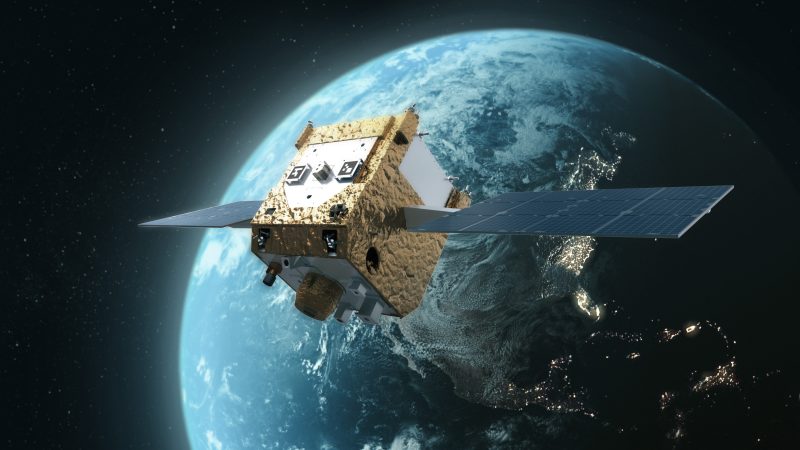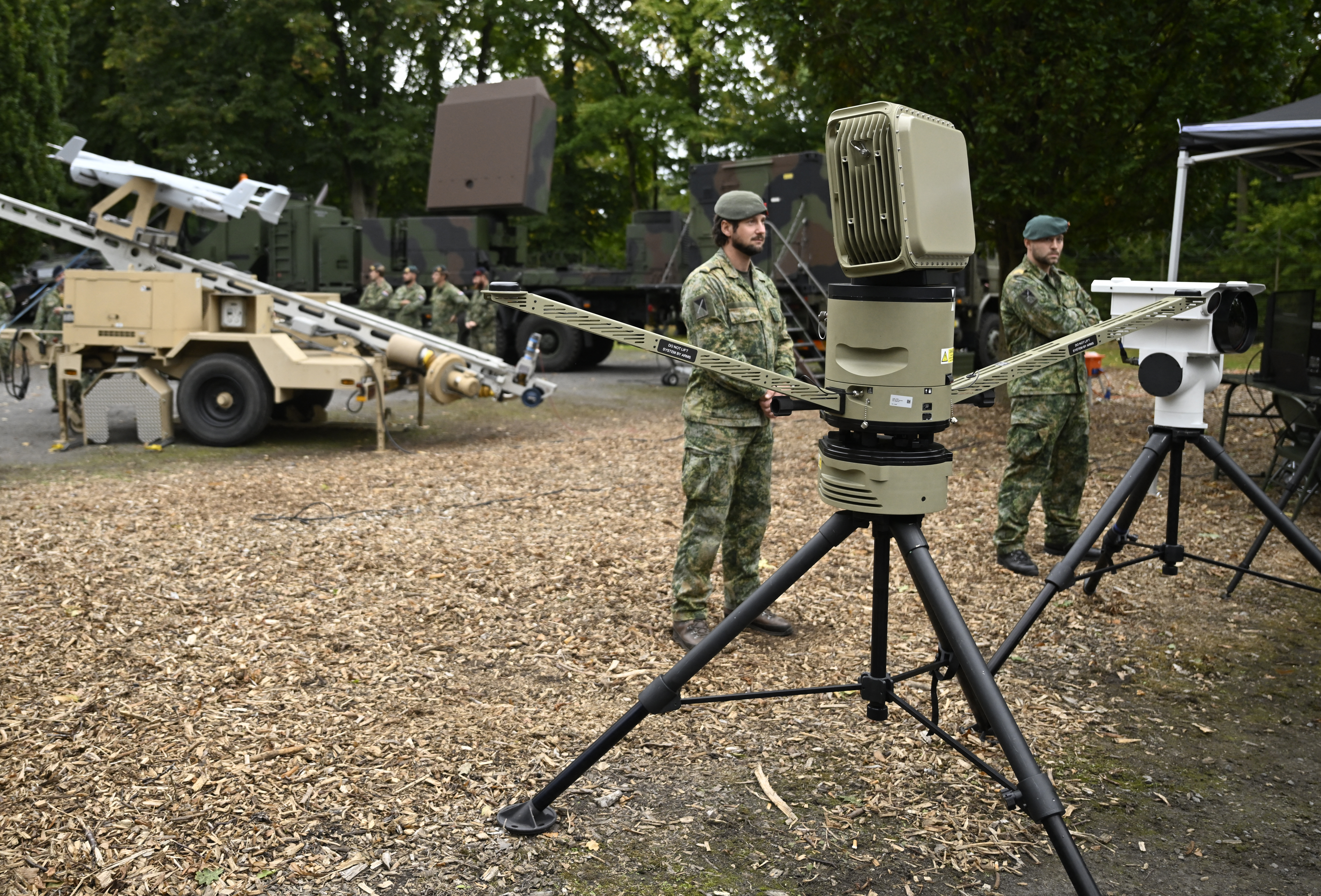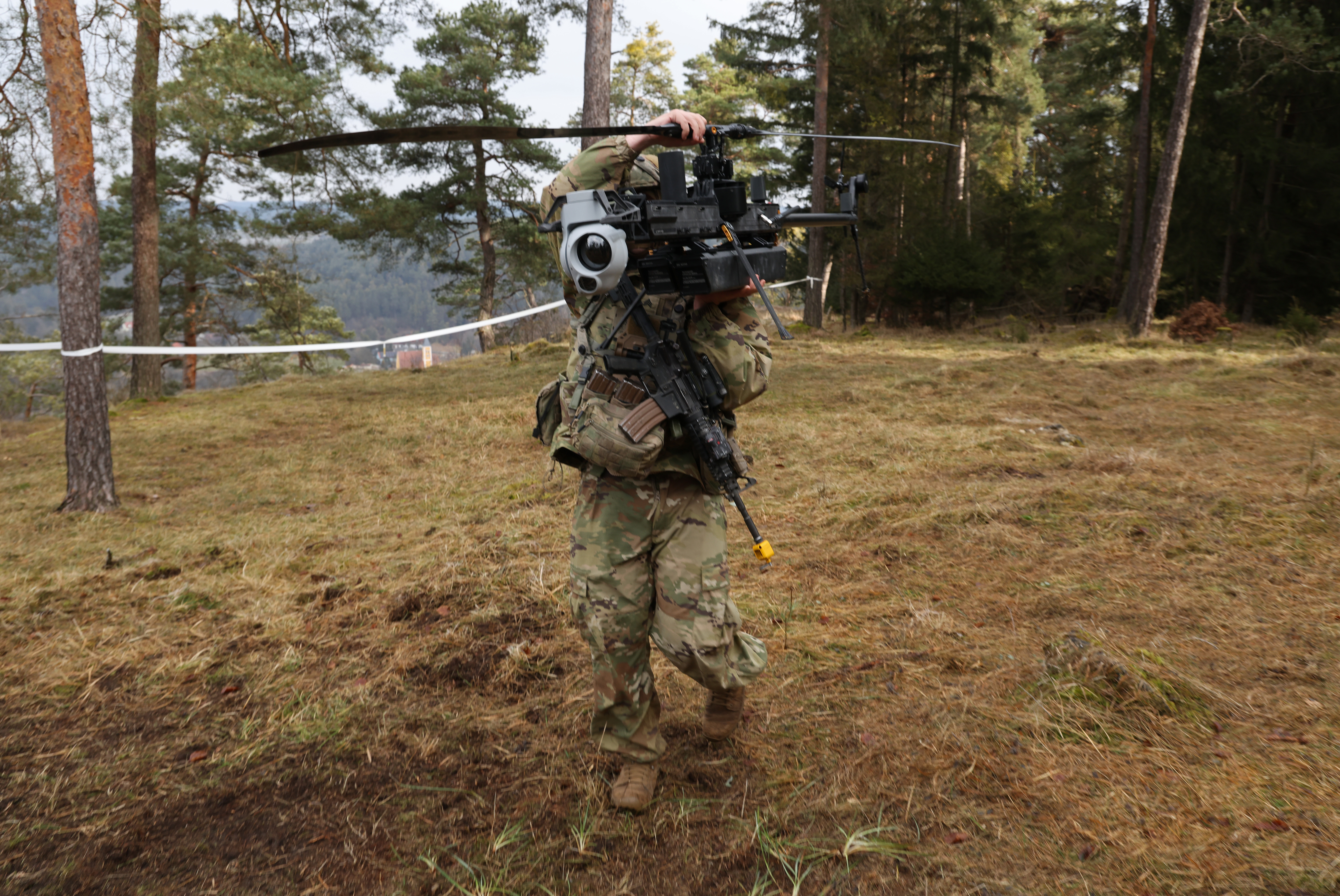
As the Space Force races to embrace its space control mission, its Rapid Capability Office is expanding from simply developing payloads to delivering complete satellites.
Much of the work done by the Space Rapid Capabilities Office is classified, but director Kelly D. Hammett told AFA’s Mitchell Institute for Aerospace Studies on June 24 that “in the next year or so, we’ll be launching our first full-up satellites.”
Hammett didn’t specify what those satellites will do, but in an unusual twist, he said the SRCO will control the spacecraft through launch and early operations under an agreement with Space Operations Command.
The office has launched payloads on classified missions before. But the move to launch and operate entire satellites hints at a growing role for the Space RCO. It’s also part of an “evolving story” in how the office handles programs, Hammett said—following through from developing technologies and into production and fielding.
Product Lines
The Space RCO is charged with delivering “timely and operationally relevant space superiority and resiliency capabilities.” As Hammett put it more simply at April’s State of the Space Industrial Base Conference: “We work on space control.”
That includes “about a dozen” programs centered on Space Control, what the service’s newest mission. Space Control refers to the ability to protect U.S. space assets and defend U.S. forces from space-enabled attack.
At that conference, Hammett said his team was working with Space Systems Command, USSF’s primary acquisition command, to develop “product lines” from those programs: different satellite components for orbital warfare that can be plugged into systems as needed
At the Mitchell Institute, he expressed interest in the ability to “pick those product line buses off the line and add the special payloads and whatever else is required.”
Hammett added, “It’s a vision we’ve been discussing for a couple of years.” Now Space RCO will be more involved in the acquisition and fielding process. The office transfers programs to SSC for full-scale production, he said, and it’s now working on more program “transitions.”
“Transition is where we actually field something. Like, we’re only going to buy a few of these, and we’re going to then transition to … Space Operations Command,” he said. “And then it’s their job to go out and place systems.” Yet control and fielding of satellite product lines “is probably a little bit more where we are going to head,” Hammett added.
Maneuvering Satellites
Hammett’s interest in satellite buses is key to space control. In order to dodge threats and pursue targets in geosynchronous orbit, “we have to pursue high-thrust, high Delta V bus capabilities,” he said.
The Space RCO recently solicited industry for input on a “Dynamic Space Operations bus” designed for such maneuvers. The request for information is classified, but Hammett hinted at what could be the key to making it work: “I think you want to have some refueling or replenishment capability,” he said. “The term we should probably be using is maneuver and logistics. Space warfighting logistics is what you want—and whatever it takes to get there.”

The Space RCO is one of several Pentagon organizations to invest in satellite refueling demonstrations, Hammett added.
“We have funded a refueler to go dock with one of the systems that we have, actually systems that have both ports, so that we can demonstrate the feasibility of both,” he said. “We can then make trades on cost and complexity and all those types of things from the warfighting perspective.”
He did not say whether that refueling operation will include satellites the Space RCO controls. Regardless, flying satellites in orbit will likely help Space RCO refine and develop its R2C2 command and control software.
“We are now building out the R2C2 platform and the services that you need to fly systems at GEO: mission plan, deconflict, and then go out,” Hammett said.
Challenges
As the Space RCO prepares for its first flight operations, it will face challenges. “One is having a cadre of experienced flight planners and operators that can extend our mission space from ‘we designed it, we delivered it, we tested it,’ to now, ‘launch it, and then go through the launch and early ops and those stages,’” Hammett said. “We don’t have a stable of folks to do that. We are trying to onboard a team that is larger and has more experience in that area.”
That raises questions about how soon the office will be able to take on such tasks. “That just gets back to policy questions that we’re going to have to get through,” he added. “A number of the capabilities we are delivering are not things that we do right now. So if we make those visible, that will tip our hand in some cases.”
The post Secretive Space RCO Plans to Launch First ‘Full-Up’ Satellites Soon appeared first on Air & Space Forces Magazine.

Space, Kelly D. Hammett, Mitchell Institute for Aerospace Studies, space control, space maneuver, Space Rapid Capabilities Office, Space RCO
Air & Space Forces Magazine
[crypto-donation-box type=”tabular” show-coin=”all”]






